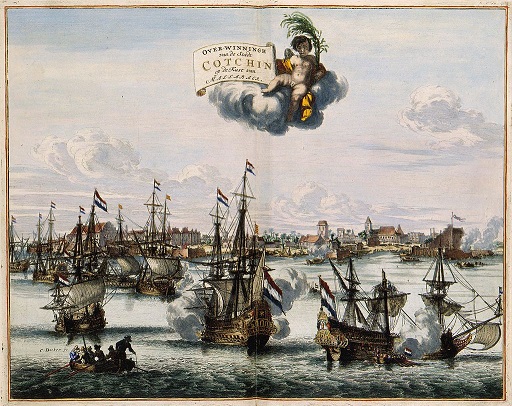Big isn’t always best: what determines investment in new technology?
- Economic leadership and technological leadership are often closely linked.
- Efficient organisations make investment decisions based on market forces. Less efficient organisations allow other factors to influence their decisions.
- The Portuguese and Dutch merchant shipping empires of the 16th and 17th century demonstrate the relationship between technological advancement and market success.
- The Portuguese crown relied on shipping technology that projected royal power and prestige in distant locations, but that was relatively less efficient compared to Dutch ships adopted throughout Europe.
- As a result, the Portuguese lost its dominance of the East India trade to the more agile Dutch merchant empire
 In 16th century Portugal, the crown’s preferences favoured enormous ships that carried merchandise but also projected royal glory and prestige rather than serving purely market oriented objectives. This technological choice resulted in Portugal losing its leadership in world trade to the Dutch, according to research by Dr Claudia Rei of the University of Warwick.
In 16th century Portugal, the crown’s preferences favoured enormous ships that carried merchandise but also projected royal glory and prestige rather than serving purely market oriented objectives. This technological choice resulted in Portugal losing its leadership in world trade to the Dutch, according to research by Dr Claudia Rei of the University of Warwick.
In a paper being presented today to the Royal Economic Society annual conference, she argues that the different organisational structures of the two merchant empires were reflected in their investment and technology decisions, and proposes a framework linking technological leadership and economic leadership in the context of 16th and 17th century Europe.
In Portugal the king owned the monopoly of eastern trade, which limited the incentive to invest in new technologies such as safer or faster ships, if they did not project royal power. The Dutch East India Company’s trade monopoly was chartered to private merchants able to run the contracts in their own interests.
Through a review of the surviving historical records, Dr Rei shows that by the end of the 16th century, Portuguese ships had become “gigantic.” While these vessels carried more merchandise and fulfilled the monarch’s objective of projecting royal power and prestige, they were slow, difficult to manoeuvre, and vulnerable to attack by pirates or political enemies. By the early 1600s the Portuguese fleet lost one in every five ships to wreck or attack, but the crown’s preference for prestigious vessels prevented the adoption of new technology in shipbuilding.
Commenting on her findings, Dr Rei said: “In addition to valuing profit, the Portuguese empire valued the glory and prestige transmitted by these ornate vessels of extraordinary size. Dutch merchants in charge of the Dutch East India Company, on the other hand, were not subject to the crown’s preferences and were free to develop market-oriented improvements in their fleet. The Dutch fleet was smaller and more agile, which was reflected in a loss rate of fewer than one ship in twenty-five lost at sea, while royal hubris kept Portugal invested in outdated naval technology.”
“The Dutch held a technological advantage in shipping and surpassed the Portuguese as leaders of trade with Asia in the 17th century. The technological evolution of the sailing ship in this time period coincides with the change of economic leadership from Portugal to the Netherlands.”
28 March 2018
Picture: The capture of Kochi and victory of the Dutch V.O.C. over the Portuguese in 1656, on the coast of Malabar. Coenraet Decker, 1682.
CONTACT
Sheila Kiggins
Media Relations Manager
S.Kiggins@warwick.ac.uk
02476 150423
07876 218166
